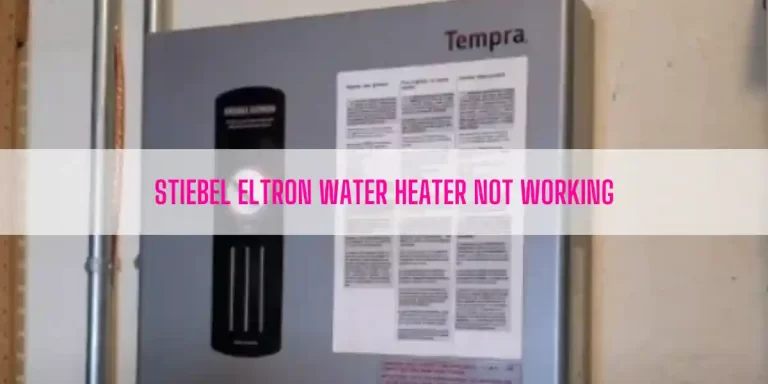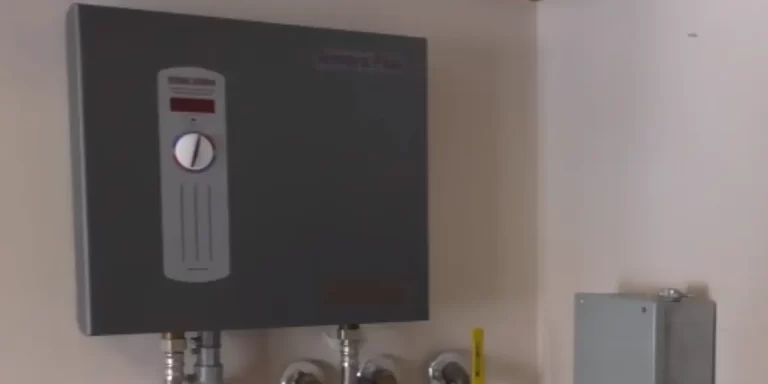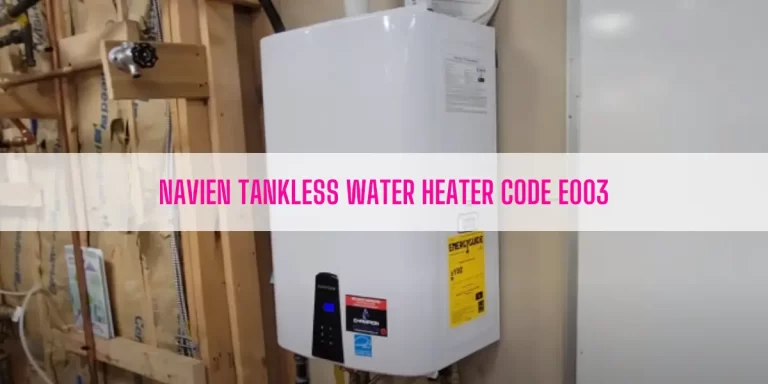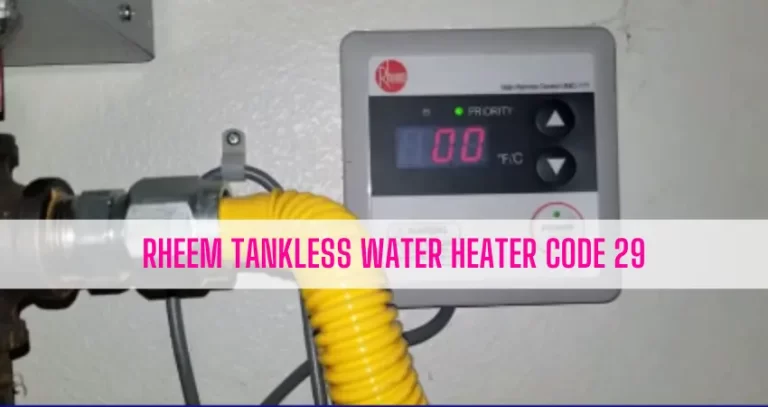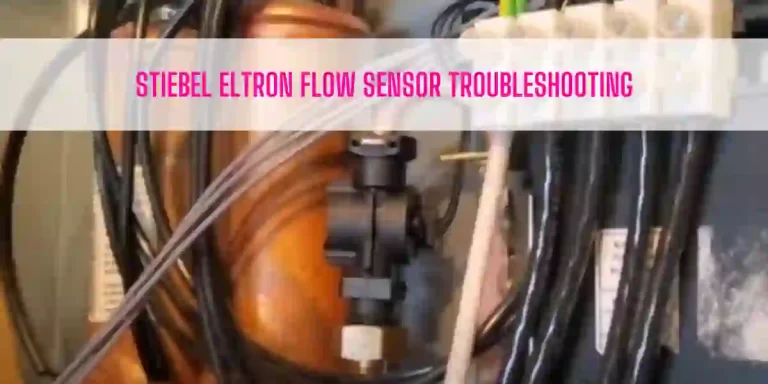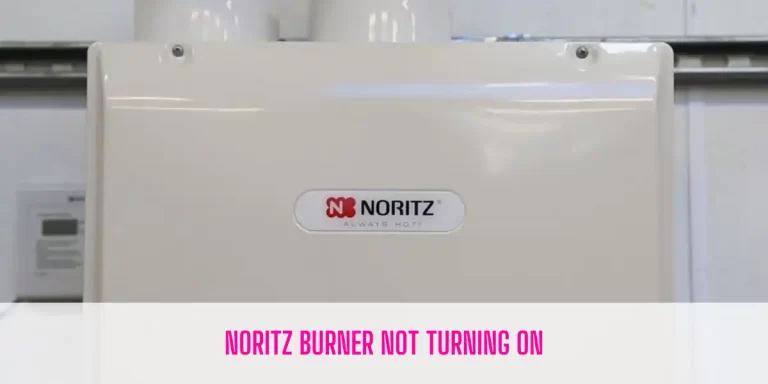Tankless water heaters provide instant hot water when needed, prompting most homeowners to upgrade to tankless or on-demand water heaters.
Though tankless water heaters are highly efficient and energy-saving, they are not beyond malfunctions.
Here are seven common tankless water heater problems you can experience with your tankless or on-demand water heater:
- Inconsistent water temperature
- System Overload
- Cold water sandwich effect
- Ignition failure
- Blocked air supply
- Mineral and sediment buildup
- System leakage
Stay in tune with us till the end to learn what tankless water heater symptoms to look for when identifying these problems and how to fix them!
Table of Contents
- 7 Common Problems with Tankless Water Heaters & How To Fix Them
- Maintenance Tips for Tankless Water Heaters
- FAQs
- Conclusion
7 Common Problems with Tankless Water Heaters & How To Fix Them
Let’s explore the solutions to those common tankless water heater problems:
1. Inconsistent Water Temperature
One of the most frequently reported issues is inconsistent water temperature. This can be caused by:
Overloaded Water Heaters
Tankless water heaters have a specific flow rate, which is the maximum amount of hot water they can provide at any given time.
If multiple hot water outlets (such as showers, dishwashers, and washing machines) are used simultaneously, the unit may struggle to keep up with the demand.
This can lead to a drop in water temperature, resulting in cold bursts during usage.
Mineral Buildup:
In areas with hard water, mineral deposits can accumulate in the heat exchanger of the tankless water heater.
Over time, this buildup can reduce the efficiency of the unit, impairing its ability to heat water effectively.
As a result, you may experience inconsistent water temperatures, particularly during peak usage times.
How To Fix:
To address the issue of inconsistent water temperature, you can implement several strategies:
Regular Maintenance
Regular maintenance is crucial for ensuring optimal performance of tankless water heaters. This includes:
- Descaling the Unit: Flushing the system at least once a year to remove mineral buildup can significantly improve efficiency and prevent temperature fluctuations. You can use a descaling solution specifically designed for tankless water heaters to effectively clean the heat exchanger.
- Checking the Size of the Unit: Ensuring that the tankless water heater is appropriately sized for the household’s hot water needs is essential. If the unit is undersized, it may struggle to provide sufficient hot water during peak usage. I highly suggest you consult with a professional to determine the correct size based on their specific hot water demands.
Reduce Hot Water Usage
If fluctuations in water temperature persist despite regular maintenance, consider staggering the use of hot water appliances.
For example, running the dishwasher and washing machine at different times or reducing the number of simultaneous showers can help alleviate the strain on the tankless water heater, allowing it to maintain a consistent temperature.
2. System Overload
Tankless water heaters have a maximum flow rate, which can be exceeded if too many hot water fixtures are used at once. This overload can lead to reduced water temperature and overall performance.
How To Fix:
Be mindful of their hot water usage, especially during peak times. Upgrading to a larger unit or installing multiple units can also be viable solutions for larger households.
3. Cold Water Sandwich Effect
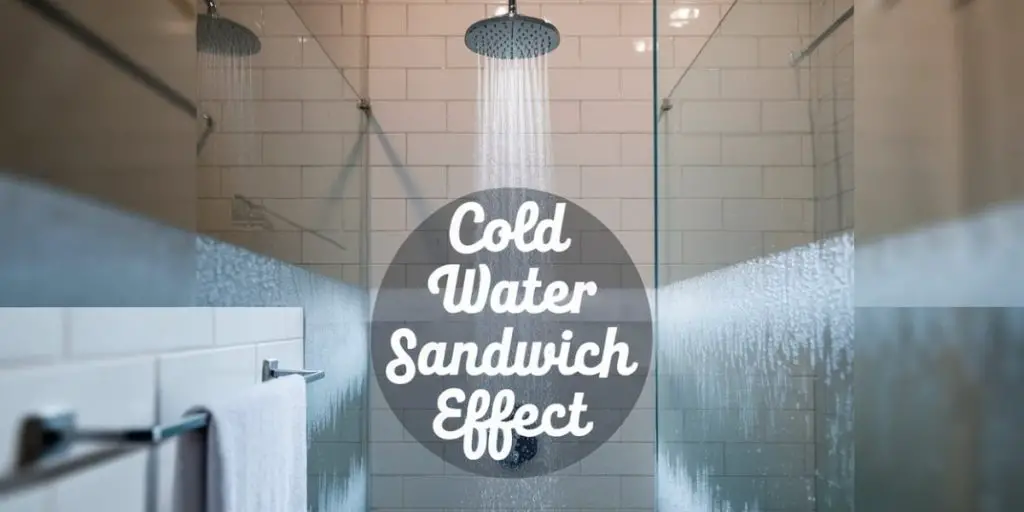
The cold water sandwich effect occurs when a burst of cold water is followed by hot water, often due to the way tankless systems heat water. This can be particularly frustrating during showers.
The cold water sandwich effect can arise from several factors related to how tankless water heaters operate:
1. Flow Rate and Demand
Tankless water heaters heat water on demand, meaning they begin heating water only when a tap is opened.
If you run multiple fixtures simultaneously or when there is a sudden change in demand (like turning off one faucet while another is still running), your tankless water heater fails to respond quickly enough.
This can lead to a momentary flow of cold water before the heater can heat the incoming water.
2. Pipe Configuration and Length
The configuration and length of the plumbing pipes can also contribute to the cold water sandwich effect. If the hot water pipes are long, it can take time for hot water to reach the faucet after the cold water has been used. This delay can result in a brief period of cold water before the hot water arrives.
3. Temperature Settings
Improper temperature settings on the tankless water heater can intensify the cold water sandwich effect. If you set the temperature to a lower setting, it can take longer to heat the incoming cold water, leading to noticeable fluctuations in temperature.
How To Fix The Cold Water Sandwich Effect
To reduce the likelihood of experiencing the cold water sandwich effect, you can implement several effective solutions:
1. Install a Buffer Tank
A buffer tank, also known as a mini-tank or point-of-use water heater, can be installed in conjunction with a tankless water heater. This small tank stores a limited amount of hot water, providing an immediate supply when a hot water tap is opened.
By having a buffer tank, the system can deliver hot water more consistently, minimizing the chances of experiencing cold water bursts.
2. Use a Recirculation Pump
A hot water recirculation pump can help maintain a steady flow of hot water throughout the plumbing system. This pump keeps hot water circulating in the pipes, ensuring that hot water is readily available at the tap.
When a faucet is turned on, hot water is delivered almost instantly, reducing the wait time and the likelihood of encountering cold water.
3. Optimize Temperature Settings
Adjusting the temperature settings on the tankless water heater can also help mitigate the cold water sandwich effect. Ensure that the heater is set to an appropriate temperature that balances comfort and efficiency.
Typically, a temperature setting between 120°F and 140°F is recommended for residential use. Fine tune the Up or the Down buttons on the front panel to set your desired temperatures.
However, it’s essential to consult the manufacturer’s guidelines for specific recommendations.
4. Manage Hot Water Usage
Being mindful of hot water usage can also help reduce the occurrence of cold water bursts.
Distribute the use of multiple hot water appliances, such as dishwashers and washing machines, to prevent overloading the system.
Additionally, timing showers and other hot water usage during off-peak hours can help maintain a consistent supply of hot water.
4. Ignition Failure
Several factors can contribute to ignition failure in gas-powered tankless water heaters:
1. Gas Supply Issues
One of the primary reasons for ignition failure is related to the gas supply. This can include:
- Low Gas Pressure: If the gas pressure is below the manufacturer’s specifications, the heater may not ignite. This can happen if the gas supply line is too small or if there are issues with the gas regulator.
- Closed Gas Valve: If the gas valve is not fully open, it can prevent gas from reaching the heater, leading to ignition failure. Homeowners should always check that the gas valve is in the open position.
2. Blocked Venting
Blocked or obstructed venting can also lead to ignition problems. If the exhaust vent is blocked, it can cause the heater to shut down as a safety precaution. This blockage can occur due to debris, bird nests, or other obstructions in the venting system.
3. Electrical Component Malfunctions
Ignition failure can also stem from issues with electrical components:
- Faulty Ignition Pack: The ignition pack is responsible for generating the spark needed to ignite the gas. If it malfunctions, the heater will not ignite.
- Wiring Issues: Damaged or loose wiring connections can disrupt the electrical flow necessary for ignition.
How To Fix:
To address ignition failure, homeowners can follow these troubleshooting steps:
1. Check the Gas Supply
- Inspect the Gas Valve: Ensure that the gas valve is fully open and that there are no leaks in the gas line.
- Verify Gas Type and Pressure: Confirm that the correct type of gas (natural gas or propane) is being used and that the gas pressure meets the manufacturer’s specifications. Typical gas pressure requirements are approximately 5-7 inches of water column (WC) for natural gas and 11-14 inches WC for propane.
2. Inspect the Venting System
- Clear Blockages: Check the exhaust vent for any obstructions. Remove any debris or blockages that could prevent proper venting.
- Ensure Proper Installation: Verify that the venting system is installed correctly and adheres to local codes and manufacturer guidelines.
3. Examine Electrical Components
- Check Power Supply: Ensure that the unit is receiving power and that there are no tripped circuit breakers.
- Inspect the Ignition Pack: If the ignition pack is dirty or corroded, clean it with a soft brush or cloth. If cleaning does not resolve the issue, the ignition pack may need to be replaced.
- Review Wiring Connections: Inspect all wiring connections for signs of damage or looseness. Repair or replace any faulty wiring as necessary
5. Blocked Air Supply
Proper airflow is crucial for the operation of tankless water heaters. Blockages in the air supply can lead to overheating and system shutdowns.
How To Fix:
Regularly inspect and clean the air supply and exhaust vents to ensure unobstructed airflow. Keeping the area around the unit free of debris is also important.
6. Mineral and Sediment Buildup
In areas with hard water, mineral deposits can accumulate in the heat exchanger, reducing the unit’s efficiency and lifespan. This buildup can act as an insulator, preventing effective heat transfer.
How To Fix:
Flushing the system at least once a year can help remove these deposits. Installing a water softener can also reduce mineral content in the water supply, preventing future buildup.
7. System Leakage
Leaks can occur due to various reasons, including loose connections, corrosion, or damage to the unit itself. This can lead to water damage and reduced efficiency.
How To Fix:
Regular inspections can help identify potential leaks early. Tightening loose connections and replacing corroded parts can prevent larger issues. If the unit is damaged, consulting with a professional for repairs or replacement is essential.
Maintenance Tips for Tankless Water Heaters
To ensure optimal performance and longevity of tankless water heaters, regular maintenance is crucial. Here are some maintenance tips:
- Regular Descaling: Flush the system at least once a year to prevent mineral buildup.
- Check Gas Supply: For gas units, ensure that the gas supply is adequate and that all valves are functioning properly.
- Monitor Water Demand: Be aware of the number of fixtures in use to avoid overloading the system.
- Inspect Vents: Regularly check and clean the air supply and exhaust vents to prevent blockages.
- Professional Servicing: Consider scheduling professional maintenance to address any potential issues and ensure the system operates efficiently.
FAQs
What is the downside of a tankless water heater?
One common downside of a tankless water heater is it gets overwhelmed when you turn on multiple fixtures. For example, if you turn on various appliances like a dishwasher and a washing machine, your tankless water heater can’t meet the demand.
Why is my tankless water heater not getting hot?
Your tankless water heater won’t get hot due to a defective igniter, a problem with a gas supply, and a dirty burner. To ensure your tankless unit provides warm water, clean or replace the igniter. Also, check for a continuous gas supply and ensure the burner is free of debris.
What is the lifespan of a tankless water heater?
The lifespan of a tankless water heater is between 15 and 20 years, depending on how you maintain and operate the tankless unit.
Related Articles:
- Navien Tankless Water Heater Problems
- Rinnai Tankless Water Heater Problems
- Rheem Tankless Water Heater Problems
Conclusion
Alongside the benefits of a tankless water heater, you may experience those seven mentioned problems with the tankless unit.
Fortunately, I explained how to troubleshoot and resolve those tankless water heater problems.
For example, if you get inconsistent hot water from the tankless water heater, check the unit for mineral build ups. Then, descale or flush your tankless water heater.
Overloading or exceeding hot water demands can also cause inconsistent water temperature issues. Reducing hot water usage or appropriately sizing the tankless water heater based on your hot water demand can easily resolve this issue.
Maintain your tankless water heater according to the user manual to avoid operational problems in the future.
Don’t hesitate to call a certified professional if you fail to resolve a problem by following our troubleshooting guidelines.

Eric Alvarez is the head of content on LilDutchUncle.Com. He is an HVAC guy based in El Paso, Texas, United States. He obtained his Bachelor of Science degree from the University Of Texas at El Paso. Years of experience in the HVAC field have taught him many lessons, not the least of which is that the value of quality and knowledge far exceeds any promised initial savings. He has a good standing reputation for superior skills in heating, air conditioning, hot water tanks, and indoor air quality systems.
